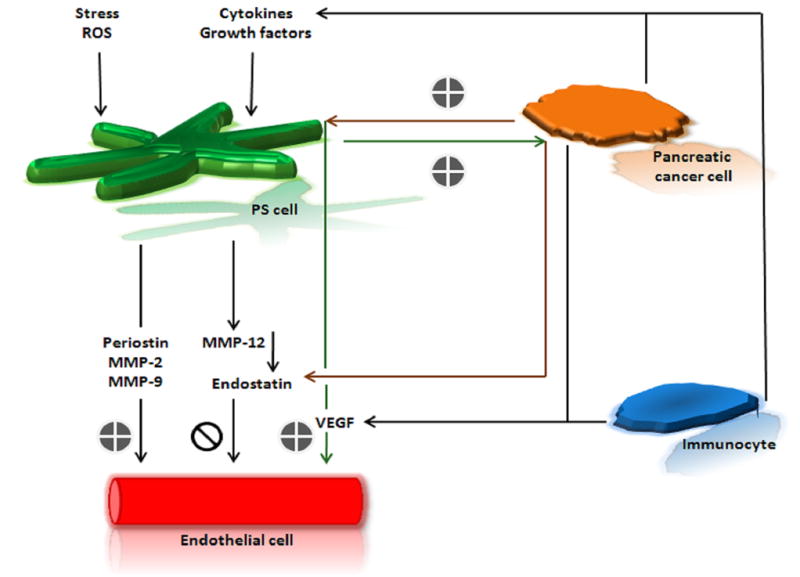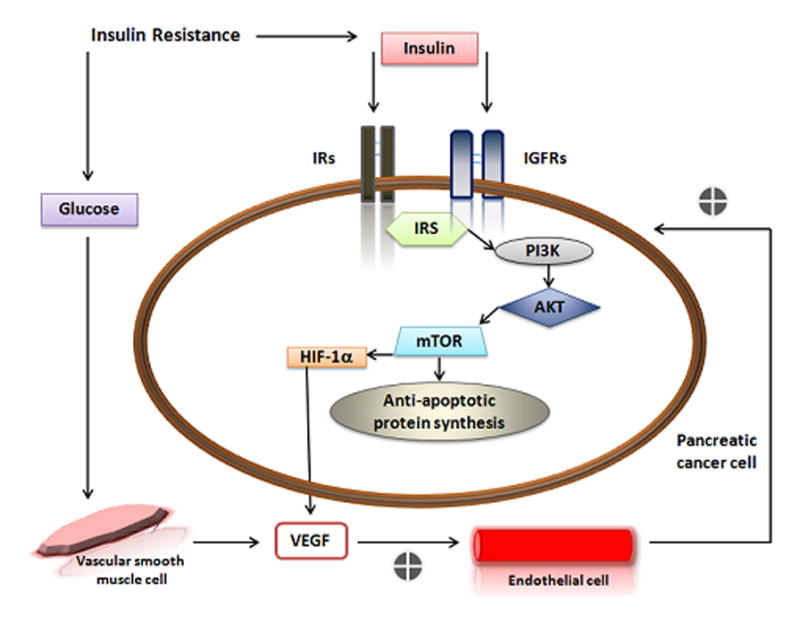Figure 1. A–B Interaction between PDAC and the Microenvironment.


A. The pro- and anti-angiogenic function of Pancreatic Stelate (PS) cells. Immunocytes can release cytokines and growth factors that promote neo angiogenesis as well as activate PS cells. Upon activation by stress, ROS, cytokines and/or growth factors PS cells can secrete periostin to mediate endothelial cell adhesion and migration as well as secrete MMPs. MMPs can both promote neo angiogenesis through basal membrane destruction (MMP-2, MMP-9) or inhibit neo angiogenesis by triggering production of endostatin (MMP-12). Pancreatic cancer cells can also promote neo angiogenesis by stimulating PS cells to secrete VEGF or inhibit neo angiogenesis by increasing endostatin secretion. B. Relationship between insulin resistance and pancreatic cancer development and survival. Insulin resistance can lead to increased insulin and glucose in the blood. When the level of IGF-1 is low in the tumor microenviroment, IGFRs and IRs that can be overexpressed on cancer cells are free for insulin to bind and stimulate cancer cell growth. Furthermore, downstream signaling of the PI3K/Akt/mTOR pathway can sustain cellular survival through the synthesis of anti-apoptotic proteins. Under hypoxic conditions, insulin can mediate VEGF secretion from pancreatic cancer cells via expression of HIF-1α. Elevated levels of blood glucose may also stimulate VEGF.
AKT (protein kinase B); HIF-1 α (hypoxia inducible factor-1α); IGFR (insulin-like growth factor receptor); IR (insulin receptor) IRS (insulin receptor substrate); MMP (matrix metalloprotease); mTOR (mammalian target of rapamycin) PI3K (Phosphatidylinositol 3-kinases) ROS (reactive oxygen species) VEGF (vascular endothelial growth factor).
